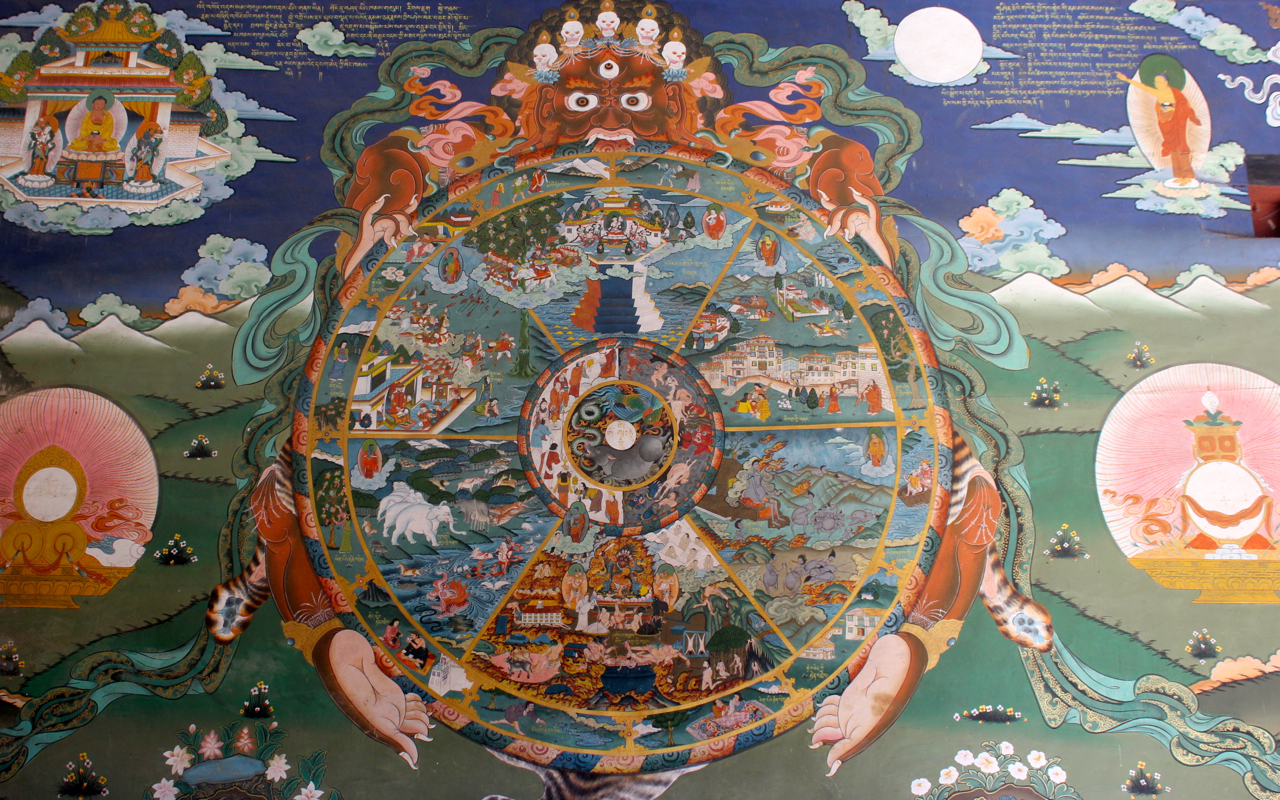|
Hinduism
Hinduism () is an Indian religion or '' dharma'', a religious and universal order or way of life by which followers abide. As a religion, it is the world's third-largest, with over 1.2–1.35 billion followers, or 15–16% of the global population, known as Hindus. The word ''Hindu'' is an exonym, and while Hinduism has been called the oldest religion in the world, many practitioners refer to their religion as ''Sanātana Dharma'' ( sa, सनातन धर्म, lit='the Eternal Dharma'), a modern usage, which refers to the idea that its origins lie beyond human history, as revealed in the Hindu texts. Another endonym is ''Vaidika Dharma'', the dharma related to the Vedas. Hinduism is a diverse system of thought marked by a range of philosophies and shared concepts, rituals, cosmological systems, pilgrimage sites, and shared textual sources that discuss theology, metaphysics, mythology, Vedic yajna, yoga, agamic rituals, and temple building, among other topics. ... [...More Info...] [...Related Items...] OR: [Wikipedia] [Google] [Baidu] |
Artha
''Artha'' (; sa, अर्थ; Tamil: ''poruḷ'' / ''பொருள்'') is one of the four aims of human life in Indian philosophy.James Lochtefeld (2002), The Illustrated Encyclopedia of Hinduism, Rosen Publishing, New York, , pp 55–56 The word ''artha'' literally translates as "meaning, sense, goal, purpose or essence" depending on the context. Artha is also a broader concept in the scriptures of Hinduism, Buddhism and Jainism. As a concept, it has multiple meanings, all of which imply "means of life", activities and resources that enable one to be in a state one wants to be in.John Koller, Puruṣārtha as Human Aims, Philosophy East and West, Vol. 18, No. 4 (Oct., 1968), pp. 315–319 Artha applies to both an individual and a government. In an individual's context, ''artha'' includes wealth, career, activity to make a living, financial security and economic prosperity. The proper pursuit of artha is considered an important aim of human life in Hinduism.Bruce Sullivan ( ... [...More Info...] [...Related Items...] OR: [Wikipedia] [Google] [Baidu] |
Ahiṃsā
Ahimsa (, IAST: ''ahiṃsā'', ) is the ancient Indian principle of nonviolence which applies to all living beings. It is a key virtue in most Indian religions: Jainism, Buddhism, and Hinduism.Bajpai, Shiva (2011). The History of India – From Ancient to Modern Times', Himalayan Academy Publications (Hawaii, USA), ; see pages 8, 98 Ahimsa is one of the cardinal virtues of Jainism, where it is the first of the Pancha Mahavrata. It is also the first of the five precepts of Buddhism. ''Ahimsa'' is a multidimensional concept,John Arapura in K. R. Sundararajan and Bithika Mukerji Ed. (1997), Hindu spirituality: Postclassical and modern, ; see Chapter 20, pages 392–417 inspired by the premise that all living beings have the spark of the divine spiritual energy; therefore, to hurt another being is to hurt oneself. ''Ahimsa'' is also related to the notion that all acts of violence has karmic consequences. While ancient scholars of Brahmanism already investigated and refined the p ... [...More Info...] [...Related Items...] OR: [Wikipedia] [Google] [Baidu] |
Indian Religions
Indian religions, sometimes also termed Dharmic religions or Indic religions, are the religions that originated in the Indian subcontinent. These religions, which include Hinduism, Jainism, Buddhism, and Sikhism,Adams, C. J."Classification of religions: Geographical", ''Encyclopædia Britannica'', 2007. Retrieved 15 July 2010 are also classified as Eastern religions. Although Indian religions are connected through the history of India, they constitute a wide range of religious communities, and are not confined to the Indian subcontinent. Evidence attesting to prehistoric religion in the Indian subcontinent derives from scattered Mesolithic rock paintings. The Harappan people of the Indus Valley civilisation, which lasted from 3300 to 1300 BCE (mature period 2600–1900 BCE), had an early urbanized culture which predates the Vedic religion. The documented history of Indian religions begins with the historical Vedic religion, the religious practices of the early Indo-Iranians ... [...More Info...] [...Related Items...] OR: [Wikipedia] [Google] [Baidu] |
Yajna
Yajna ( sa, यज्ञ, yajña, translit-std=IAST, sacrifice, devotion, worship, offering) refers in Hinduism to any ritual done in front of a sacred fire, often with mantras.SG Nigal (1986), Axiological Approach to the Vedas, Northern Book, , pages 80–81 Yajna has been a Vedic tradition, described in a layer of Vedic literature called Brahmanas, as well as Yajurveda. The tradition has evolved from offering oblations and libations into sacred fire to symbolic offerings in the presence of sacred fire (Agni). Yajna rituals-related texts have been called the ''Karma-kanda'' (ritual works) portion of the Vedic literature, in contrast to ''Jnana-kanda'' (knowledge) portion contained in the Vedic Upanishads. The proper completion of Yajna-like rituals was the focus of Mimansa school of Hindu philosophy. Yajna have continued to play a central role in a Hindu's rites of passage, such as weddings. Modern major Hindu temple ceremonies, Hindu community celebrations, or monastic ini ... [...More Info...] [...Related Items...] OR: [Wikipedia] [Google] [Baidu] |
Homa (ritual)
In the Vedic Hinduism, a homa (Sanskrit: होम) also known as havan, is a fire ritual performed on special occasions by a Hindu priest usually for a homeowner (" grihastha": one possessing a home). The grihasth keeps different kinds of fire including one to cook food, heat his home, amongst other uses; therefore, a Yajna offering is made directly into the fire. A homa is sometimes called a "sacrifice ritual" because the fire destroys the offering, but a homa is more accurately a "votive ritual". The fire is the agent, and the offerings include those that are material and symbolic such as grains, ghee, milk, incense and seeds. It is rooted in the Vedic religion, and was adopted in ancient times by Buddhism and Jainism. The practice spread from India to Central Asia, East Asia and Southeast Asia. Homa rituals remain an important part of many Hindu ceremonies, and variations of homa continue to be practiced in current-day Buddhism, particularly in parts of Tibet and Japan. It ... [...More Info...] [...Related Items...] OR: [Wikipedia] [Google] [Baidu] |
Puja (Hinduism)
''Puja'' ( sa, पूजा, pūjā, translit-std=IAST) is a worship ritual performed by Hindus, Buddhists and Jains to offer devotional homage and prayer to one or more deities, to host and honor a guest, or to spiritually celebrate an event. It may honor or celebrate the presence of special guests, or their memories after they die. The word ''pūjā'' is Sanskrit, and means reverence, honor, homage, adoration, and worship.पूजा ''Sanskrit Dictionary'', Germany (2009) Puja, the loving offering of light, flowers, and water or food to the divine, is the essential ritual of Hinduism. For the worshipper, the divine is visible in the image, and the divinity sees the worshipper. The interaction between human and deity, between |
Saṃsāra
''Saṃsāra'' (Devanagari: संसार) is a Pali/Sanskrit word that means "world". It is also the concept of rebirth and "cyclicality of all life, matter, existence", a fundamental belief of most Indian religions. Popularly, it is the cycle of death and rebirth. ''Saṃsāra'' is sometimes referred to with terms or phrases such as transmigration/reincarnation, karmic cycle, or Punarjanman, and "cycle of aimless drifting, wandering or mundane existence". The concept of ''saṃsāra'' has roots in the post-Vedic literature; the theory is not discussed in the Vedas themselves. It appears in developed form, but without mechanistic details, in the early Upanishads. The full exposition of the ''saṃsāra'' doctrine is found in Śramaṇic movements such as early Buddhism and Jainism, as well as various schools of Hindu philosophy after about the mid-1st millennium BCE. The ''saṃsāra'' doctrine is tied to the karma theory of Hinduism, and the liberation from ''saṃsāra ... [...More Info...] [...Related Items...] OR: [Wikipedia] [Google] [Baidu] |
Karma
Karma (; sa, कर्म}, ; pi, kamma, italic=yes) in Sanskrit means an action, work, or deed, and its effect or consequences. In Indian religions, the term more specifically refers to a principle of cause and effect, often descriptively called the principle of karma, wherein intent and actions of an individual (cause) influence the future of that individual (effect): Good intent and good deeds contribute to good karma and happier rebirths, while bad intent and bad deeds contribute to bad karma and bad rebirths. As per some scripture, there is no link of rebirths with karma. The concept of karma is closely associated with the idea of rebirth in many schools of Indian religions (particularly Hinduism, Buddhism, Jainism and Sikhism), as well as Taoism.Eva Wong, Taoism, Shambhala Publications, , pp. 193 In these schools, karma in the present affects one's future in the current life, as well as the nature and quality of future lives—one's '' saṃsāra''. This concept has ... [...More Info...] [...Related Items...] OR: [Wikipedia] [Google] [Baidu] |
Saṃsāra
''Saṃsāra'' (Devanagari: संसार) is a Pali/Sanskrit word that means "world". It is also the concept of rebirth and "cyclicality of all life, matter, existence", a fundamental belief of most Indian religions. Popularly, it is the cycle of death and rebirth. ''Saṃsāra'' is sometimes referred to with terms or phrases such as transmigration/reincarnation, karmic cycle, or Punarjanman, and "cycle of aimless drifting, wandering or mundane existence". The concept of ''saṃsāra'' has roots in the post-Vedic literature; the theory is not discussed in the Vedas themselves. It appears in developed form, but without mechanistic details, in the early Upanishads. The full exposition of the ''saṃsāra'' doctrine is found in Śramaṇic movements such as early Buddhism and Jainism, as well as various schools of Hindu philosophy after about the mid-1st millennium BCE. The ''saṃsāra'' doctrine is tied to the karma theory of Hinduism, and the liberation from ''saṃsāra ... [...More Info...] [...Related Items...] OR: [Wikipedia] [Google] [Baidu] |
Moksha
''Moksha'' (; sa, मोक्ष, '), also called ''vimoksha'', ''vimukti'' and ''mukti'', is a term in Hinduism, Buddhism, Jainism and Sikhism for various forms of emancipation, enlightenment, liberation, and release. In its soteriology, soteriological and eschatology, eschatological senses, it refers to freedom from ''saṃsāra'', the cycle of death and Reincarnation, rebirth. In its epistemology, epistemological and psychological senses, ''moksha'' is freedom from ignorance: self-realization, self-actualization and self-knowledge. In Hindu traditions, ''moksha'' is a central concept and the utmost aim of human life; the other three aims being ''dharma'' (virtuous, proper, moral life), ''artha'' (material prosperity, income security, means of life), and ''kama'' (pleasure, sensuality, emotional fulfillment). Together, these four concepts are called Puruṣārtha in Hinduism. In some schools of Indian religions, ''moksha'' is considered equivalent to and used interchange ... [...More Info...] [...Related Items...] OR: [Wikipedia] [Google] [Baidu] |
Kama
''Kama'' (Sanskrit ) means "desire, wish, longing" in Hindu, Buddhist, Jain, and Sikh literature.Monier Williamsकाम, kāmaMonier-Williams Sanskrit English Dictionary, pp 271, see 3rd column Kama often connotes sensual pleasure, sexual desire, and longing both in religious and secular Hindu and Buddhist literature, as well as contemporary Indian literature, but the concept more broadly refers to any desire, wish, passion, longing, pleasure of the senses, desire for, longing to and after, the aesthetic enjoyment of life, affection, or love, enjoyment of love is particularly with or without enjoyment of sexual, sensual and erotic desire, and may be without sexual connotations. Kama is one of the four goals of human life and is also contemplated as one of the primary needs to fulfill during the stages of life according to the Hindu tradition. It is considered an essential and healthy goal of human life when pursued without sacrificing the other three goals: Dharma (virtu ... [...More Info...] [...Related Items...] OR: [Wikipedia] [Google] [Baidu] |
Puruṣārtha
''Purushartha'' (Sanskrit: पुरुषार्थ, International Alphabet of Sanskrit Transliteration, IAST: ) literally means "object(ive) of men". Cappeller Sanskrit-English Dictionary, Koeln University, Germany It is a key concept in Hinduism, and refers to the four proper goals or aims of a human life. The four ''puruṣārthas'' are Dharma (righteousness, moral values), Artha (prosperity, economic values), Kama (pleasure, love, psychological values) and Moksha (liberation, spiritual values, self-actualization). All four ''Purusharthas'' are important, but in cases of conflict, ''Dharma'' is considered more important than ''Artha'' or ''Kama'' in Hindu philosophy. ''Moksha'' is considered the ultimate goal of human life. ... [...More Info...] [...Related Items...] OR: [Wikipedia] [Google] [Baidu] |







